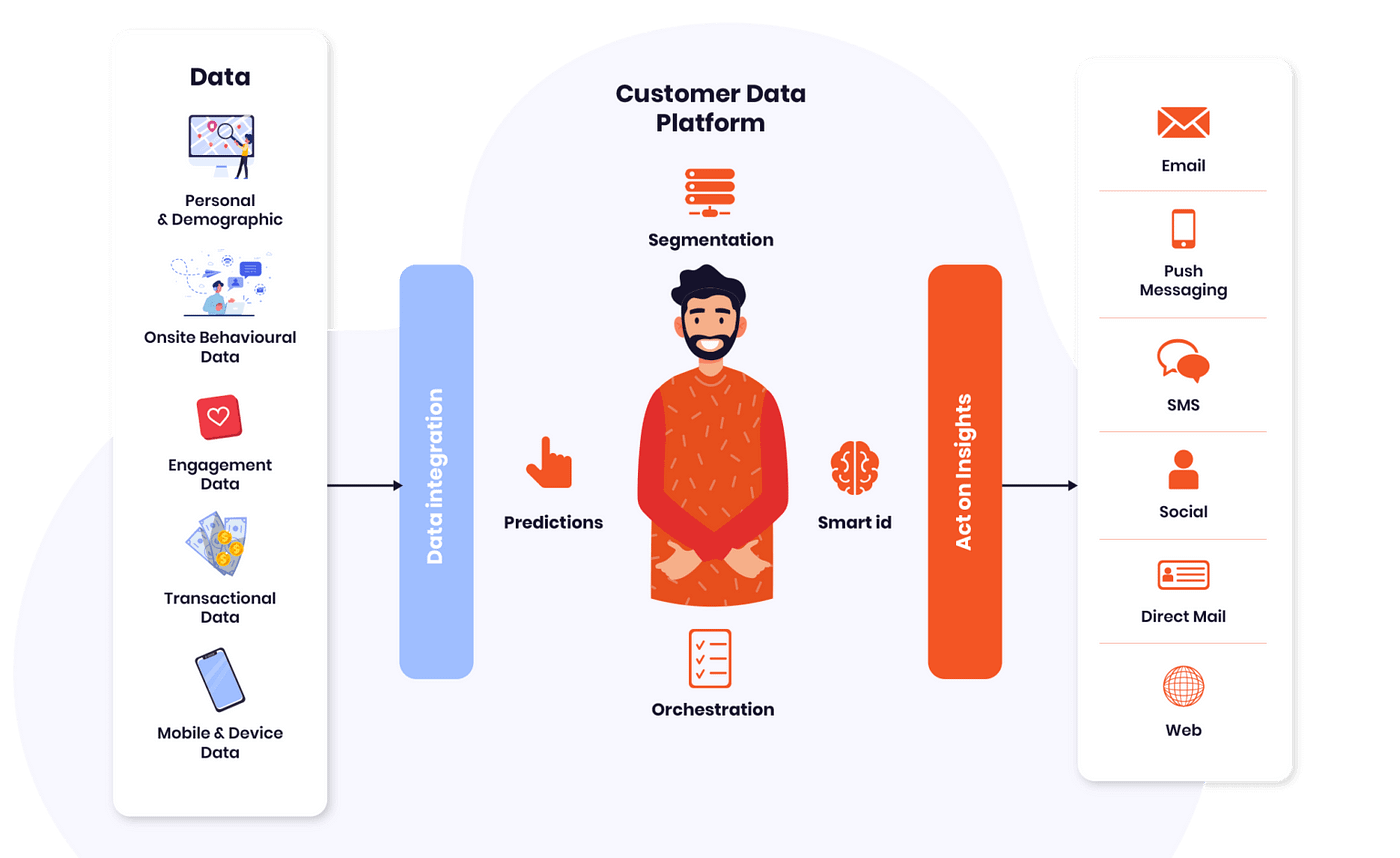Navigating the Martech Landscape: An In-depth Look at Customer Data Platforms
Marketing, more than any other business field, is strongly intertwined with technology. Information technology allows marketing teams to interact with their audience on their own terms- by capturing and utilizing customer data.
One of the key technologies in this area is the Customer Data Platform (CDP). CDPs go beyond the usual CRM systems, they collect and consolidate data from multiple sources, and then provide a unified view of each customer. This not only unlocks powerful insights but also enables highly personalized engagement with customers.
Unveiling Customer Data Platforms
CDPs are marketing systems designed to assemble customer data from various sources, standardize it, and create a unified customer profile. This offers a reliable and central customer database that communicates data with other MarTech systems. CDPs have gained significant recognition among marketers, with interest in the sector rising by 32% between 2021 to 2022.
Read : Unveiling 2024’s Engagement Ring Trends
Read : Trendy Ways to Amplify Your Money: Investment Opportunities to Look Out For in 2024
Read : Master The Art of Profit Making: A Comprehensive Guide To Investing Money In 2023
A surge in the utilization of CDPs can be credited to the mounting significance of the customer experience, facilitated through real-time data collection, AI-backed segmentation, and personalization of interaction along each of the consumer touchpoints. Moreover, as the reliance on third-party data dwindles, businesses are turning to CDPs to strengthen their first-party data and engage in practices that honor customer privacy.
Layering the Core Features of Customer Data Platforms
CDPs come equipped with three core, distinctive features:
- Unified & Persistent Customer Database: CDPs provide a transparent and granular view of data at an individual level. They can identify customers across varied data sources, collating information under a unique identifier, then storing their own copy of the data.
- In-depth Control Over Customer Data: CDPs offer control over customer data collection, segmentation, and orchestration through native integration that alleviates the need for heavy IT or developer involvement.
- Data Integration: CDPs can merge both known and unidentified data with any external source or platform.
The CDP Institute identifies five key capabilities that a ‘real CDP’ must contain: absorbing real-time data from any source, capturing full detail of ingested data, storing data indefinitely, creating unified profiles of identified individuals, and sharing data with any system that requires it.
Diverse Types of CDPs
Despite sharing a category name, CDP systems vary significantly in terms of their primary objective. The CDP Institute categorizes CDPs into data, analytics, campaign, and delivery, influenced by the CDP vendors’ origins. It’s important to note the emergence of a new type of CDP that allows marketers to customize a CDP as per their needs by combining different software.
Harnessing the Benefits of CDPs
CDPs offer a slew of benefits by enabling real-time data collection, integration across varied sources, and creating a unique customer profile across numerous channels. They manage data from both virtual and analogue realms, increasingly important in this mixed reality world we live in.
In a nutshell, the power of a CDP lies in consolidating customer data, illuminating customer insights that help marketers deliver notable customer experiences, increase campaign effectiveness, and help navigate the complex landscape of martech.


